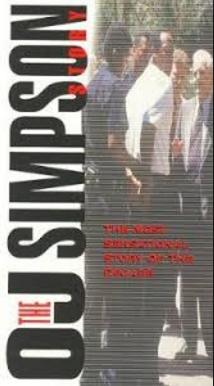What’s an Insomnia File? You know how some times you just can’t get any sleep and, at about three in the morning, you’ll find yourself watching whatever you can find on cable? This feature is all about those insomnia-inspired discoveries!
If you were having trouble sleeping last Tuesday, around one in the morning, you could have turned over to TCM and watched Remember My Name, an odd and sometimes frustrating little thriller from 1978.
Remember My Name opens with Emily (Geraldine Chaplin) showing up in a small town in California. From the minute we first see and hear Emily, something seems to be off about her. She views the world through suspicious eyes. Whenever anyone talks to her, you’re never quite sure whether she’s going be friendly or if she’s going to lash out. When she speaks, there’s something weird about her vocal inflection, as if she’s always struggling to figure out what she’s supposed to say. She seems to be separated from the world, almost as if she’s walking through a living dream and only talking to figments of her imagination. There’s nothing about her that feels at all authentic.
She moves into a small apartment and enters into a relationship with her handyman (Moses Gunn), a relationship that seems to be largely defined by her refusal to open up about herself. She gets a job at a grocery story that’s managed by a Mr. Nudd (Jeff Goldblum). Mr. Nudd mentions something about Emily knowing his mother. Apparently, they met in prison.
Soon, Emily is stalking a construction worker named Neil Curry (Anthony Perkins). When Neil spots her, he calls out her name and Emily runs away. And yet, Neil doesn’t bother to tell his wife, Barbara (Berry Berenson), about Emily. Soon, Emily is even breaking into the Curry home, silently shadowing Barbara as she walks through the house.
I described Remember My Name as being a thriller and I guess that, technically it is. There are a few moments of tension, especially when Emily is stalking Barbara. However, the film itself is directed in a detached manner by Alan Rudolph. Rudolph was a protegé of director Robert Altman (who also produced Remember My Name) and Rudolph’s approach is very Altmanesque, often to the detriment of the film. (Chaplin and Jeff Goldblum had both appeared in several Altman films, most famously in Nashville.) Though the film is dominated by Chaplin and Perkins, it’s still very much an ensemble film and the action plays out in a deceptively casual, almost random manner. It tries so hard to be Altmanesque that Remember My Name gets a bit frustrating, to be honest. Chaplin gives such a good and memorable performance and she works very hard to make Emily a character who is both frightening and, at times, surprisingly sympathetic but, for the most part, Rudolph’s technique makes it difficult to get emotionally involved in any of the action unfolding on-screen. Rudolph observes the action but refuses to comment on it. As a result, Remember My Name is occasionally intriguing but, just as often, it’s rather boring. Just like real life, I suppose. And, just like real life, it’s not for everyone.
That said, it was interesting to see Anthony Perkins playing a role other than a knife-wielding inn manager. Without resorting to any of the familiar tics or the neurotic speech patterns that typecast him forever as Norman Bates, Perkins plays Neil as just being a regular, blue collar guy and he actually does a pretty good job. Watching the film, I got the feeling that this was perhaps Perkins’s attempt to change his image. (Whenever Neil appears shirtless, both the film and Perkins seem to be saying, Check out this physique! Would someone only capable of playing a psycho have abs like this?) Neil’s wife, Barbara, was played Perkins’s wife, Berry Berenson. Neither one of them is with us any longer. Perkins died of AIDS in 1990 while Berry Berenson was on one of the planes that flew into the World Trade Center on 9-11. They both did good work in this film, as did Chaplin and Goldblum and, really, the entire cast. It’s just a pity that the film itself isn’t as good as the performances. 
Previous Insomnia Files:
- Story of Mankind
- Stag
- Love Is A Gun
- Nina Takes A Lover
- Black Ice
- Frogs For Snakes
- Fair Game
- From The Hip
- Born Killers
- Eye For An Eye
- Summer Catch
- Beyond the Law
- Spring Broke
- Promise
- George Wallace
- Kill The Messenger
- The Suburbans
- Only The Strong
- Great Expectations
- Casual Sex?
- Truth
- Insomina
- Death Do Us Part
- A Star is Born
- The Winning Season
- Rabbit Run
 Long before
Long before
